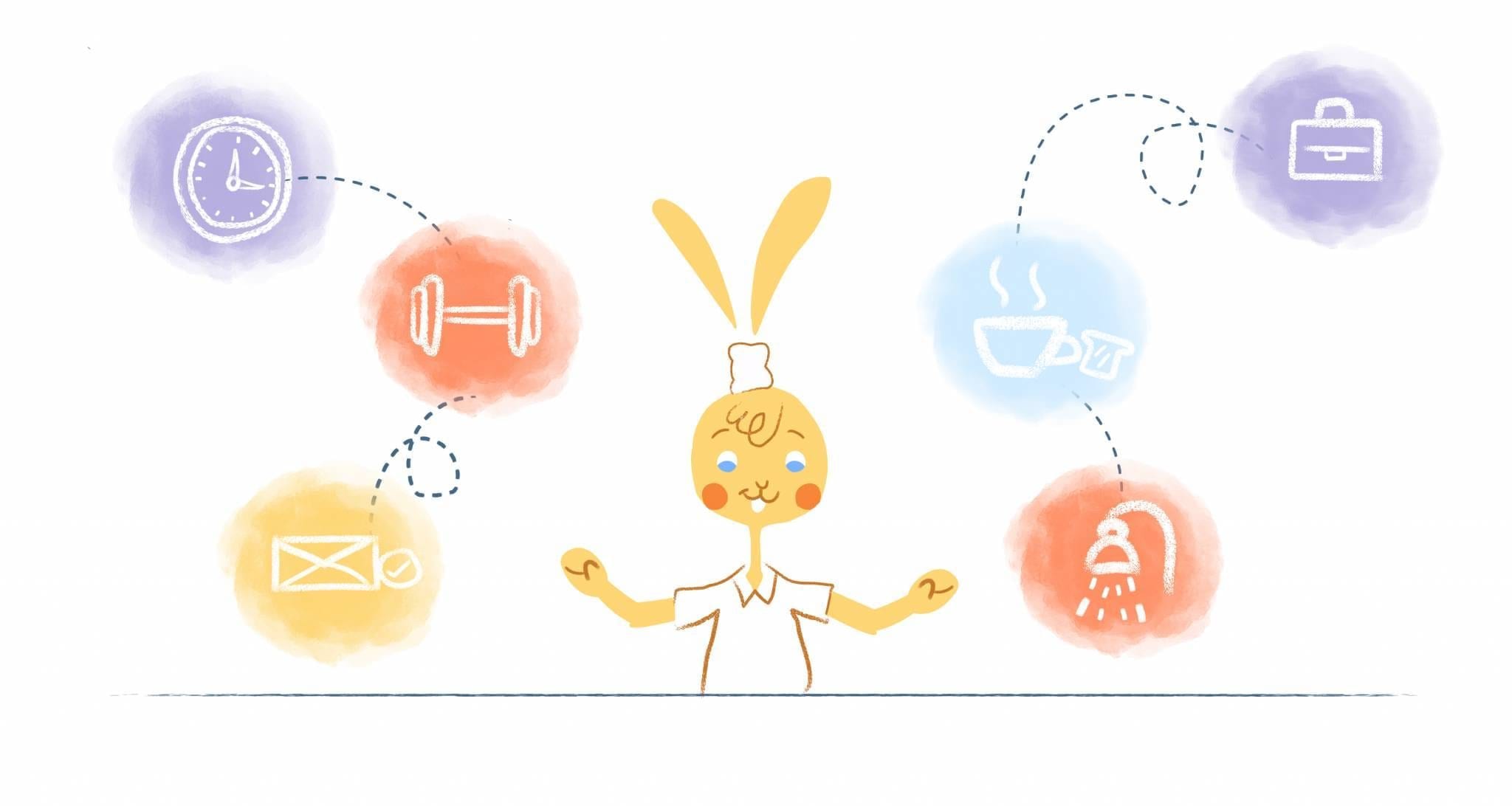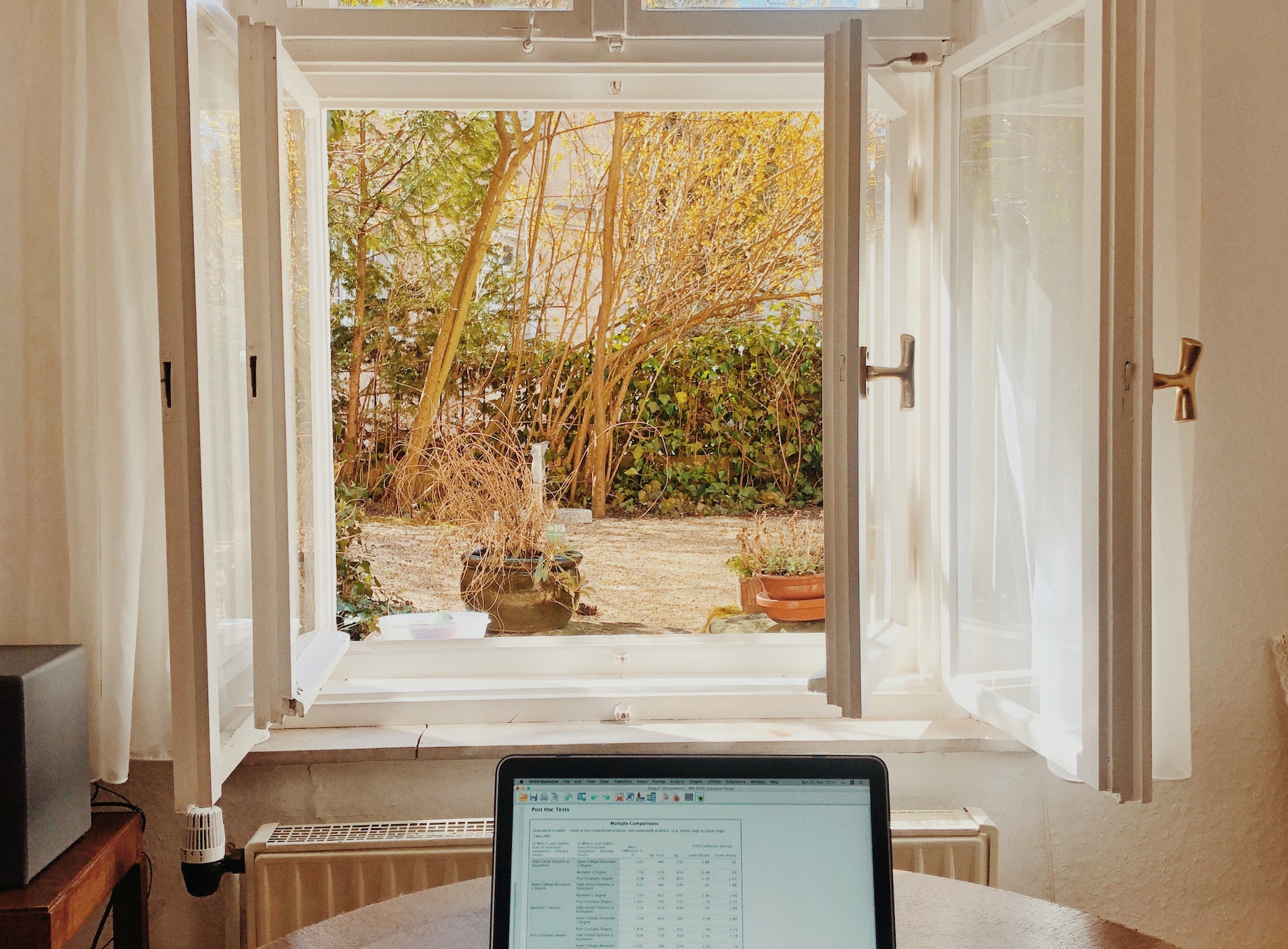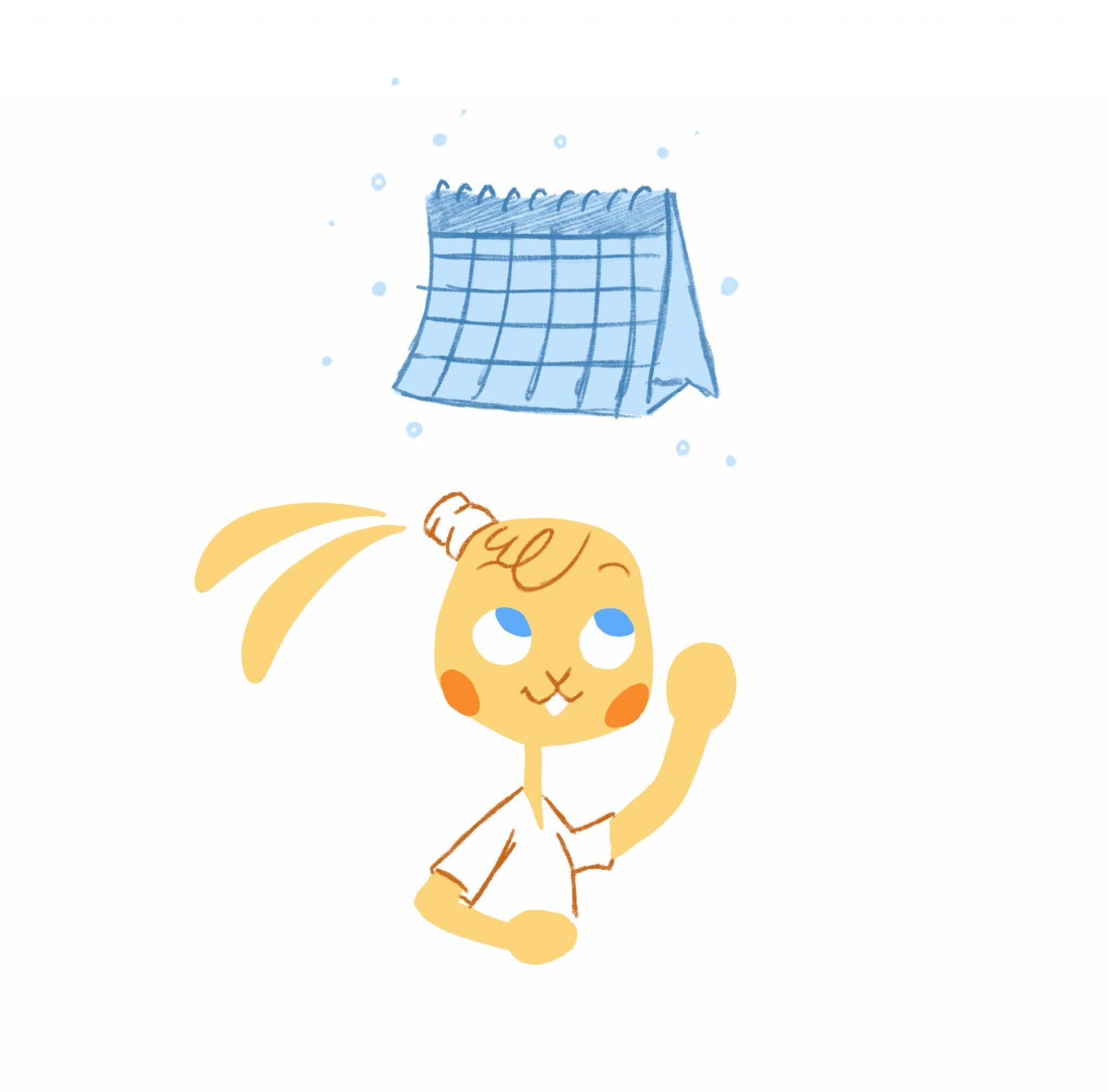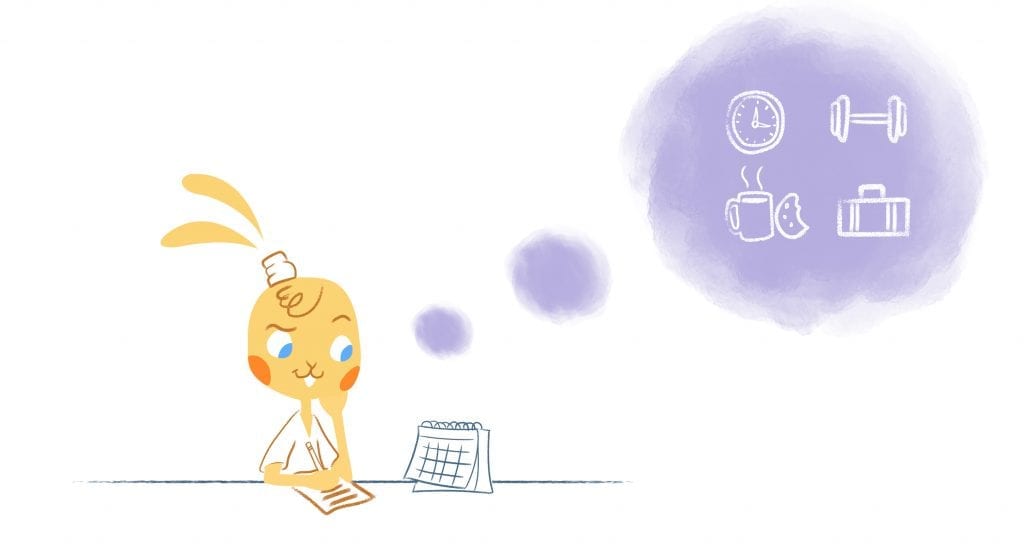

It seems so harmless. You’re on a conference call while composing an email. You’re cooking dinner, but listening to a podcast or dictating a new piece of content. Or, you’re exercising while also watching a TedTalk. And, you always drop whatever you’re doing to respond to smartphone notifications. Here is the myth of multitasking.
All of those examples are what we consider as multitasking. And, while it may appear to be an effective way to get more done, it’s actually the opposite.
What is multitasking?
“Multitasking is attempting to do or more things simultaneously,” explains Howie Jones in a previous Calendar article. “Unlike segmented amounts of time for a task, such as half an hour interval, multitasking is attempting to complete two or more things at the exact same time.”
On paper, that sounds like a great idea. Essentially, you’re killing two birds with one stone. In reality, that’s just not possible as the “human brain seems to be set up to handle one task at a time.”
Okay. So, you can’t do two or more tasks simultaneously? What’s the big deal?
Well, for starters, you’re splitting your attention. “Best-case scenarios, you have half of your attention on two separate tasks,” explains Howie. “Worst case scenario, you are unable to focus on either task and take extra time to complete both.” In turn, this affects “the overall amount of time it takes to complete tasks” and leads “to a poor quality product for your efforts.”
Moreover, multitasking comes with the following consequences:
- The University of London found that we lose up to 10 IQ points when trying to multitask.
- A study from the University of California San Francisco found that multitasking negatively impacts your working memory.
- Researchers from Stanford report that multitasking is less productive than doing a single thing at a time.
- Neuroscientists state that because multitasking drains your mind’s energy reserves, you lose focus. And, this can make you more anxious and inhibits creativity.
- Gloria Mark, a professor of informatics sciences at UC Irvine, found that when you get off track, it takes an average of 23 minutes and 15 seconds to regain your focus.
Still not convinced? When you multitask, you’re more prone to make mistakes or have an accident. It also prevents you from getting into a flow state. And, it can actually slow you down.
And, most surprisingly, there is no such thing as multitasking.
You’re really just switching tasks.
According to Guy Winch, Ph.D., author of Emotional First Aid, you’re not multitasking. You’re really switching back and forth between tasks. In his 2008 book, The Myth of Multitasking: How ‘Doing It All’ Gets Nothing Done, Dave Crenshaw dubbed this switch-tasking.
What’s the difference between the two? Most of us assume it’s “when you stop and switch your attention back and forth, whereas multitasking is when you are trying to do multiple things the same time.” Crenshaw says that that’s incorrect.
“The correct answer is that they are the same—there is no difference,” he writes. “Switchtasking is the word I created to describe what is really taking place when people attempt to multitask.” Crenshaw goes on to state that there are actually multiple types of multitasking.
The high cost of switchtasking.
“Switchtasking is juggling two tasks by refocusing attention back and forth and losing time and progress in the switch,” writes Marcey Rader. “Switch-tasking is the biggest problem for most people.” Mainly, it’s because we’re able to do so very quickly.
“We are under the illusion we are doing things simultaneously, but in reality, we aren’t,” adds Marcey. “If it’s something that involves the same part of the brain, like writing an email and talking on the phone, you can’t do them at the same time.” In fact, “the average person spends three minutes working on something before they switchtask.”
Others refer to this as switching costs. But, whatever term you use, the jest is the same; you’re constantly switching between tasks. How common is this? Well, one study found that workers did this every three minutes.
What’s the price for switching costs? Well, here’s an experiment that you can try to find out for yourself courtesy of Nancy K. Napier Ph.D. over at Psychology Today:
- One a sheet of paper, draw two horizontal lines.
- Now, time yourself writing out “I am a great multitasker” on the first line. One the second line, write out the numbers 1-20 sequentially. It should take you around 20 seconds.
- On a fresh piece of paper, draw two more lines.
- This time, “write a letter on one line, and then a number on the line below, then the next letter in the sentence on the upper line, and then the next number in the sequence, changing from line to line.” For example, after you write the letter “I,” you would then write the number “1.” Do this until you’ve completed both lines. You probably noticed that you at least doubled your time.
Attention residue: How multitasking still affects us even after moving on.
Another type of multitasking is when we attempt to do multiple tasks in quick succession. Even though you’re essentially doing on thing at a time, you’re still switching from one task to the next. As a result, this creates a build-up of something called attention residue.
Basically, this is a carryover from one task to the next. For example, you just concluded a video call with your team. You instantly jump into your next task without a break. But, that call is still on the top of your mind, so you aren’t giving you the following task 100% of your attention.
[P]eople need to stop thinking about one task to fully transition their attention and perform well on another,” wrote Sophie Leroy, a business-school professor at the University of Minnesota, in a 2009 paper. “Yet, results indicate it is difficult for people to transition their attention away from an unfinished task, and their subsequent task performance suffers.”
Whenever you switch activities, you’re forcing your brain’s executive functions to go through the two stages to the executive control process:
- Stage one is goal shifting, where you decide to do one thing instead of another.
- Stage two is role activation, where you change from the rules for the previous task to the new one.
Going through these energy-intensive stages is mentally taxing. And, it even depletes your willpower.
Background tasking: the exception to the rule.
To be fair, though, it is possible to do more than two things at once. Take background tasking as an example.
“Background tasking is when something mindless or mundane occurs in the background such as starting a load of laundry while you answer Email,” explains Crenshaw. “Since the laundry doesn’t require your attention and is occurring in the background, this is a background task.” And, because this doesn’t involve multi thinking, this “can be very efficient.”
The solution? Tap into the power of single-tasking.
As the name implies, single-tasking is focusing on one activity at a time. When you do this, you’ll deliver higher-quality work in less time. You’ll also have less stress. And, it can also boost creativity and encourages you to focus on your priorities.
How can you develop this superpower? According to neuroscientist Adam Gazzaley of the University of California, San Francisco, you can by following this simple 3-step plan:
- Hide your phone. “Don’t just put it on silent, don’t just flip it face down,” notes Corrine Purtill for Quartz. “Put it in a drawer, a bag—anywhere, so long as it’s not visible to you.” That may sound extreme. But, just the “mere sight of the phone triggers distracting thoughts.”
- Set a timer. “Start with five minutes of distraction-free time devoted to nothing but the task at hand,” adds Purtill. “You’ll increase this time as you build your focus skills.”
- Take a break — preferably outside. “Instead of downing another cup of coffee at the desk, replenish your mental reserves with a break from work—and, ideally, a break from screens,” writes Purtill. If possible, get outside as might increase concentration.
Easy enough, right?
After you’ve implemented the above, you may also want to try these single-tasking strategies:
- Set up a dedicated workspace in a quiet area. Also, make sure that it’s frequently cleaned and organized.
- Create a daily schedule with blocks of time for focused work. Also, add blocks to check your email.
- Try the Pomodoro Technique so that you work for 25 minutes, then take a 5-minute break.
- Leave only one tab on your computer open when working.
- Set unrealistic deadlines — HBR states this keeps you focused.
- Prioritize your lists.
- Block distracting apps and websites at specific times.
- Batch similar tasks together.
- Practice mindfulness.
- Always finish what you start.











Albert Costill
My name is Albert Costill and I'm a content marketer at Calendar. If I can help people become more productive in my journey, even better. If you ever have a question about your Calendar or how you can use it - - don't hesitate to reach out. I'm a Calendar Pro.